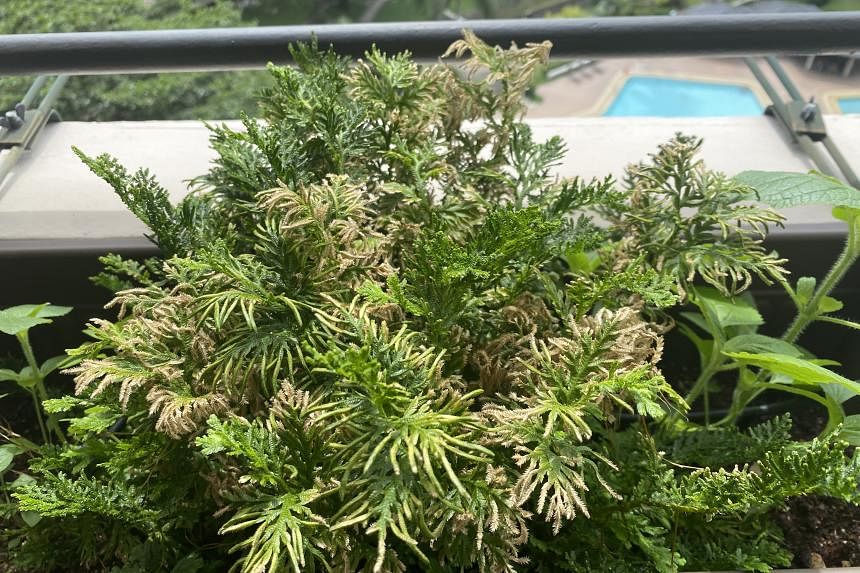Do not let selaginella dry out
My moss plant is usually low-maintenance and dries out only when it has not been watered in days. Why is it so dry despite the recent wet weather?
Melissa Tan
Your plant belongs to the genus Selaginella, also known as spike moss. Check the growing media for moisture levels rather than relying on the weather. If the moisture levels are too low, the leaf tissues will dry out and die, and will not recover even if the plant is watered.
To check for soil moisture, stick your finger or a chopstick about 2cm or more into the growing medium. Moist soil will have particles that will stick to the chopstick.
If the plant feels dry, water it thoroughly until the water drains out from the holes at the base of the pot. Wind in high-rise environments can also dry plants out. Protect or move your plants to a different location during windy periods to prevent wind burn.
Shiny bush is an edible weed
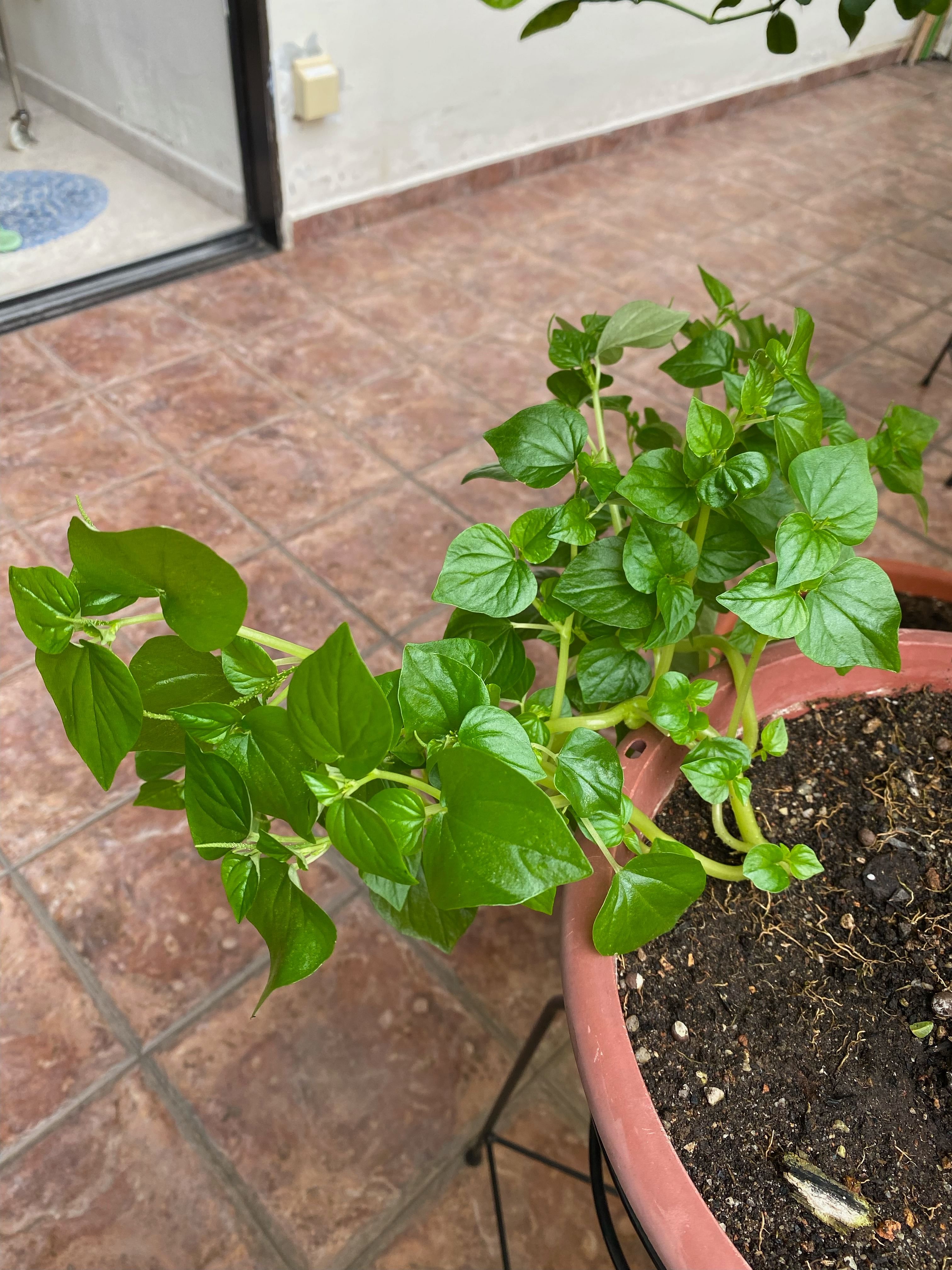
What is this plant? It grows in the same pot as my suji plant. Is it edible and will it compete for nutrients with my suji plant?
Briliana Jatimora
This plant is commonly known as the shiny bush (botanical name Peperomia pellucida) or pepper elder. It has shallow roots and is not likely to compete for nutrients with your other plant. It can be eaten as a vegetable and has uses in traditional medicine.
Shrub is the kaffir lime
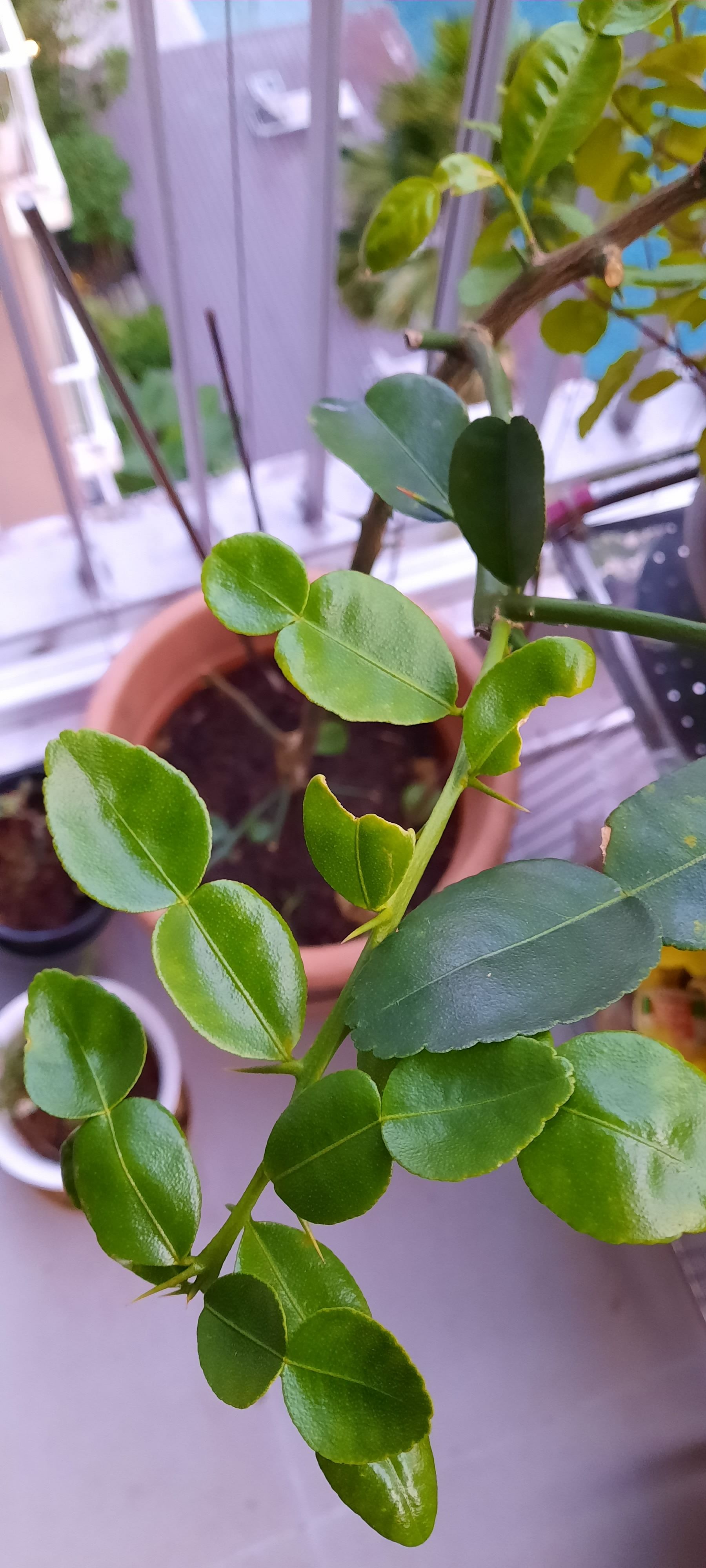
This plant seems to be dying. Its leaves smell like lime – what is it and how can I save it?
Jerene Tan
This plant is the kaffir lime (botanical name Citrus hystrix) and is also known as limau purut. The fruit rind and crushed leaves emit a distinctive citrus scent. Its leaves are used to flavour Thai dishes such as tom yum soup.
This plant needs direct sunlight and well-draining soil to grow well. Citrus plants generally fare poorly under shade and in heavy clay-like soils. Move it into a larger pot if the roots have filled the container. It is a slow-growing plant and its leaves must be protected from caterpillar attacks.
Coral vine can be propagated via stem cuttings
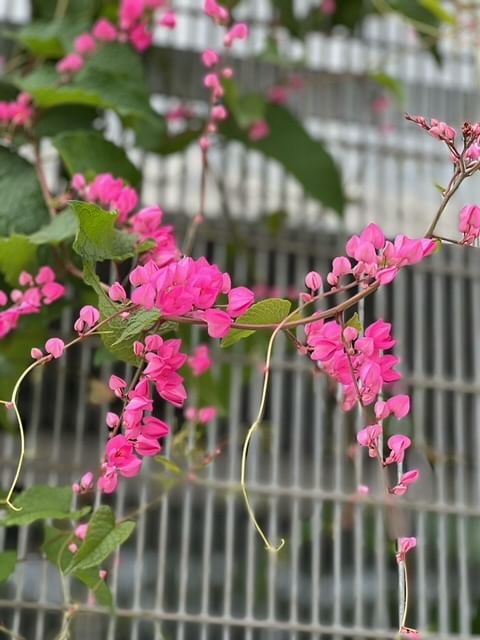
What is this plant and how do I care for it? Can it reproduce from seeds?
Roslin Chua Cheng Hwee
The plant is the coral vine (botanical name Antigonon leptopus). It produces pink, nectar-rich flowers that attract bees, which are important pollinators. As a larger climber, it needs a sizeable trellis to grow on. It requires direct sunlight and well-draining soil to thrive. Its seeds can be harvested from ripe fruit, which are brown in colour, but propagation via stem cuttings is a faster way to get new plants.
Abnormal structures are leaf galls
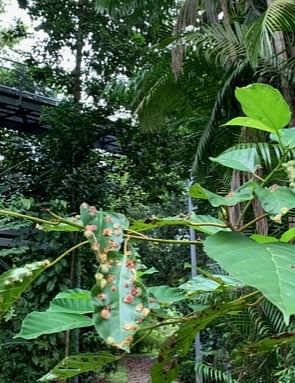
While on a forest trail at Gillman Barracks with some friends, I saw this deformed leaf with strange bodies stuck to its surface. They looked like miniature rambutans, which are about 3-4mm in diameter. We thought they might be bugs or plant parts that had fallen from overhanging trees, but the ground under the leaves was clear.
Winifred Yap
The hairy bumps are leaf galls. This abnormal leaf growth can be attributed to organisms such as mites, thrips, midges, psyllids and wasps. Newly formed galls can be opened up to examine the cause of their formation. As they are small, you may need a hand lens to do so.
The damage caused by some of these gall-forming organisms is mostly cosmetic, but it can sometimes interfere with plant growth. An example is the erythrina gall wasp’s infestation of the coral tree, a species of ornamental tree that was once planted in Singapore. Chemical control is often needed to manage the pest population and reduce damage to the plant.
- Answers by Dr Wilson Wong, an NParks-certified practising horticulturist, parks manager and ISA-certified arborist. He is the founder of Green Culture Singapore and an adjunct assistant professor (Food Science & Technology) at the National University of Singapore.
- Have a gardening query? E-mail it with clear, high-resolution pictures of at least 1MB, if any, and your full name to stlife@ sph.com.sg. We reserve the right to edit and reject questions.
